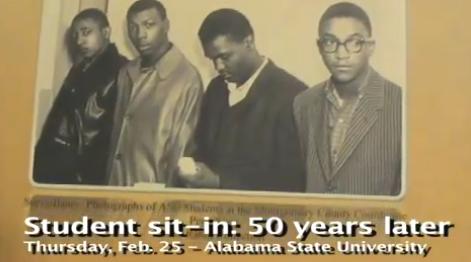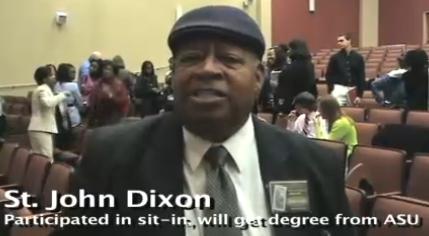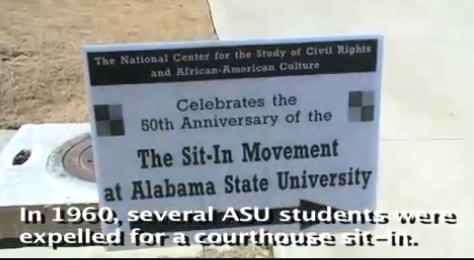Feb. 15, 2014 Update: Don’t miss Frank Baker’s fabulous article about inspiring photojournalist Gordon Parks; perfect storytelling for Black History Month and year round engagement.
Jan. 20, 2014 Update: I can’t think of a better way to honor Martin Luther King Day than to support change and action firsthand…
Honored to attend the first ever StartUpWeekend Oakland of innovation creation raising under-represented voices in the tech arena, from women and minorities to the focus on Black Male Achievement Feb. 7-9, 2014! For a ‘first person storytelling’ standpoint, look no further than Echoing Green Fellowship recipient and founder of Qeyno Labs, Kalimah Priforce.
Original Post: Jan. 17, 2011 Martin Luther King Day
In our celebrity-fixated media-bonkers culture, it can feel like life’s own reality show is trumped by whatever’s being served up in the electronic distribution channel creating a distorted lens of what’s important based on media mind-share.
Time and again I’ve seen youth respond with slack-jawed awe when face to face with human beings sharing their stories in ‘been there, done that’ adversity, particularly when poignant drama comes into play. Whether it’s a survivor of teen dating violence, gang warfare, car crashes or cancer, the experiential elements of storytelling can quiet a rowdy room to a pindrop in “you can’t make this stuff up” mode.
As educators and parents, why don’t we use first person narrative storytelling and peer to peer personal experiences to engage empathic learning, frame cultural context, and even flip the cycle of bullying/victim and recovery more often? Clearly these methods make learning come alive. Example?
 While StoryCorps is a fabulous way to archive the voices and experiences of Americana, and digital storytelling is surging in popularity from TechSoup hands-on media making projects to student content in iPhone apps for kids, my own teen’s personal brush with living history today at the celebration of Dr. Martin Luther King in San Francisco will go on record as being a ‘whoa’ moment for us both, as we inadvertently ended up in conversation with none other than one of the original ASU 9 from the 1960 sit-in in Montgomery Alabama…Mr. John Dixon. (that’s him as an ASU student, 2nd fr left, circa 1960)
While StoryCorps is a fabulous way to archive the voices and experiences of Americana, and digital storytelling is surging in popularity from TechSoup hands-on media making projects to student content in iPhone apps for kids, my own teen’s personal brush with living history today at the celebration of Dr. Martin Luther King in San Francisco will go on record as being a ‘whoa’ moment for us both, as we inadvertently ended up in conversation with none other than one of the original ASU 9 from the 1960 sit-in in Montgomery Alabama…Mr. John Dixon. (that’s him as an ASU student, 2nd fr left, circa 1960)
This affable, unassuming, 72-year old gentleman was manning an elementary school booth…NOT surrounded by media and microphones and flashing paparazzi hoopla of unabashed “I am somebody, look at me” style…
…Instead his demeanor was reserved, observational, and low key, as many ‘real life’ inspirations often are. (at left via web, a visual/video Feb 2010 via HBCU digest)
We danced with our eyes in that intuitive manner as if to assess whether one or the other was truly interested in coming onto the floor…
As tidbits of MLK inspiration started to weave themselves into our dialog, he slowly pulled a news clipping out, or an anecdote about MLK’s kids, or a 1960 frame of reference…
Sure enough, he finally surfaced his magazine cover of the ASU spring 2010 edition and there he was, in his cap and gown, earning the honorary degree he was deprived of when expelled during the ASU sit-in over segregated lunchrooms during the Civil Rights movement.
For the life of me, I can’t fathom why media doesn’t shine the spotlight on living legends that could tell the tales of African American history that never made the books, the media, or even conversational patter, when the fabric of their experiences are so profoundly interwoven with the tapestry of our times.
To me, we’re missing the mark on how to engage kids in the conversations that matter, and make living history come alive…
Beyond promoting a day of service and individuals like John Dixon who have devoted their lives to same, much like these orgs I’ve written about here, I’m advocating less for “celebrity-fying” courageous human beings and more for personifying and sharing in experiential learning style…
REAL, relatable storytelling, profiling nonviolent trailblazers like these, frankly turns some of the angst-ridden violent anger of present day hiphop lyrics into a bit of a vapid, self-absorbed power whine.
There are vivid lessons to be learned from living human beings with serious ‘street cred’ who can impart accurate, poignant, points of view far beyond thuggish backlash and media profiteering through hate bait…and do so in healthier ways that engage and inspire.
Plus…kids thrive when they are able to get to their own ‘aha moment,’ achieving historic context, and the ability to connect the dots directly rather than deal with ephemeral ‘larger than life’ icons and pedestals of “fame.”
As Univ of Maryland professor Michelle Scott stated well in the Baltimore Sun:
“Elementary schoolchildren need to see that King was just like them…It’s helpful to take him down from the pedestal,” Scott said, “and show him as a real, working man, struggling against segregation and discrimination.”
This is where men like John Dixon and kids’ grandpas and grandmas and neighborhood storytellers have the ability to cut through the media clutter and shine as the freedom fighters and embodiment of courage and conviction to THIS generation…
Or as the kids might say, ‘to represent.’
 I can’t wait to interview Mr. Dixon next month, judging by my teen’s own emotional reaction where she duly noted he ‘teared up a little bit’ in retelling what it felt like to finally be reinstated at his alma mater 50 years later.
I can’t wait to interview Mr. Dixon next month, judging by my teen’s own emotional reaction where she duly noted he ‘teared up a little bit’ in retelling what it felt like to finally be reinstated at his alma mater 50 years later.
That said, it made me wince when I Googled and read some of the commentary on the sites about reinstating the ASU-9 as some testily huffed it was ‘too little too late’ and others snarkily accused of ‘political correctness run amok’ by reopening 50-year old wounds in why bother/it doesn’t change anything style or ‘that was then this is now’ modus operandi. I beg to differ.
What’s the message we’re teaching if contrition is ‘worthless?’
Righting past wrongs DOES matter…not just to the people that punctuate the stories, but to young listeners of a legacy struggling for context and pertinence and relativity to wrap their heads around what the ‘civil rights movement’ was all about, far beyond ‘slavery and King.’
As professor Michelle Scott said,
“If you want students to learn about the movement and King’s place in it, then you have to talk about civil rights earlier than the 1950s. You can’t just get from slavery to King…
…”Students would benefit from seeing more of King’s works, such as the “Letter from a Birmingham Jail” and his Sunday sermons, getting more exposure to his ideas on poverty and learning more about the March on Washington to get a better sense of how it all fits together…”
 John Dixon’s ASU experience personifies one of many interwoven links through time that crystallizes the journey and solidifies the high price so many have paid to get here.
John Dixon’s ASU experience personifies one of many interwoven links through time that crystallizes the journey and solidifies the high price so many have paid to get here.
In an age of Snooki and Kanye and shallow debased blather drowning out the voices rich in heritage and justice and nonviolent methods of overcoming odds on behalf of good and humanity as a whole, adding context matters…big time.
Now more than ever, when American schools are more segregated than MLK’s era and when youth are weaned on vapid values of attention-getting media mechanisms and fame and fortune replacing talent and purpose as cultural currency, I’d say we’re in dire need of the John Dixons of the world.
Not to turn him into ‘St. John’ or hero-worship as Raymond A. Winbush, director of the Institute of Urban Research at Morgan State University has described the schoolchildren’s ‘larger than life’ view of Dr. King…
…But instead as a peacemaker and a maverick in his own right, standing up for the core underpinnings of the Constitution and freedoms of our forefathers.
Winbush said of MLK in the education sector,
“It’s like we boiled him down to four words — ‘I have a dream’ — the same way we’ve boiled Malcolm X down to ‘by any means necessary,'” he said. “I think the students are in danger of getting an image of Dr. King … ascending into heaven.”
 And that can’t happen if we want to impart critical thinking skills and historic voice with accuracy on the groundswell and tonality of the civil rights movement.
And that can’t happen if we want to impart critical thinking skills and historic voice with accuracy on the groundswell and tonality of the civil rights movement.
We need the real deal…storytelling that’s approachable and relatable, otherwise we end up with a spin on the ‘dead white guys/black guys dates and numbers’ rote recitations of history and lofty holier than thou sanctimonious speeches.
Kids need to see people who ‘look like them’ and hear their points of view adding dimension to the conversation…What about stories like Eleanor Sheppard in this video who was left behind at the sit-in due to the dangers of being the sole woman? Again, we just don’t consider this in the context of female invisibility and cultural change…
I left a voicemail for John Dixon reiterating what a pleasurable impact his hanging out at the table had on my teen, and he returned the call first thing in the morning “uplifted and inspired” being able to have touched our lives, peeling back the pages of his own experiences.
Believe me, I have no intention of propping him up on a pedestal out of reach, as this gentle soul is one I want to connect with up close and personal to hear his own chapters unfold in that snapshot of time…
P.S. As we left the MLK celebration at the arts building to segue across the street to the Curious George exhibit at the Jewish Contemporary Art Museum my daughter mused:
“Gawd, that was so cool…he’s like…I dunno…a story in himself.”
Yes, honey, he is.
As we stepped up the curb she spied the long line of security checks to get into the Jewish museum and said, “So what’s the big deal? Why is it such a hassle to get in here?”
I launched into a reminder to ‘think global’ in terms of some of the religious conflicts and violence in the middle east, with terrorism, with turf wars, with a variety of civil rights freedom fights going on right this minute.
“Ok, fine, I get it…but what does religion have to do with a monkey and a bicycle?
…”And what does Curious George have to do with the Jewish Museum and MLK Day?”
Not knowing the background of illustrators Margret and H.A. Rey fleeing Nazi occupied Europe, I can see why the ‘Curious George Saves the Day’ exhibit would land on her as a media question mark as well as a big ol’ civil rights ‘say whaaaa?’ moment.
The writer in me couldn’t help but frame, “You know how you just heard a little snippet of John Dixon’s civil rights story?
Well…you’re about to hear another chapter from a different book…different author…different race, creed, color.”
“You must not lose faith in humanity. Humanity is an ocean; if a few drops of the ocean are dirty, the ocean does not become dirty.” —Gandhi
Related Resources/Media Convos
Just launched: Turnstyle News: Stories That Matter
Just launched: Toontastic, Cartoon Creation/Storytelling App
Youth Speaks.org: Identity. Voice. Power. Imagination.
Center For Digital Storytelling at StoryCenter.org
Youth Educators & Storytellers (YES!) Alliance
Youth Storytelling.com (pdf doc/empowerment)
TechSoup Digital Storytelling Event (now thru Jan 31, 2011)
Storytelling: Students Recount Personal Tales (Edutopia)
ASU Students Expelled for 1960 Sit-In Reinstated
Acts of Defiance That Changed History (50th Anniv civil rights sit-ins)
Youth Call to Service: MLK Day Off? Make It A Day On










I’m in a similar mode as your daughter with the numerous “whoa moments” packed into this post.
The telling of stories…makes one think about the countless untold stories that are caught in the hearts and minds of the aging, meanwhile we plug our ears with Ipods and cram our communication into 140 characters.
Thanks for bringing John Dixon’s story to light.
Thanks, Elin…I plan on profiling John Dixon next month too, since ironically February is both Black History month AND Teen Dating Violence/awareness month…
Amazing to connect the dots between those two issues too, as I’ve been behind the scenes working on the whole ludicrous ‘Monster/Kanye’ violence against women video to get beyond ‘petition’ thinking into larger scale Grammy/$$$ financial ramifications sans accountability for the drek being put out there. ugh.
Instead of ‘digital rights mgmt’ we need ‘personal rights mgmt’ so that all artists agree to ‘do no harm’ in Socratic oath style… I mean, really, people…dead women hanging from chains and eating off a dinner table of female corpses? Talk about desensitization and misogynistic misfires. BLEH.
Thanks for bringing John Dixon’s story to light.
Love this.
Imagine for a moment that somewhere in the middle of Texas there was a large foreign military base, say Chinese or Russian. Imagine that thousands of armed foreign troops were constantly patrolling American streets in military vehicles. Imagine they were here under the auspices of “keeping us safe” or “promoting democracy” or “protecting their strategic interests.”
Watch the Video: http://www.youtube.com/watch?v=DSc14z72k2o
@Evelyne? I’m not sure what that has to do with first person storytelling, but I’ll bite. Your video links to a Ron Paul diatribe and your personal link goes to a Michele Malkin post…
I’m not sure what your message is here on the geopolitical front, perhaps blue + red = purple? If so, I’ll take the centrist slant, but know that MY post is about archiving history via 1st person storytelling, not about political spin… (though from a media literacy standpoint the former should always be evaluated with the latter in mind. 😉
“neither left nor right but forward” is my motto…eh?
John Dixon’s ideas are to be followed and implied. Sadly, we are greatly influenced by media.
Agree…and I still need to get together with him for a follow up interview! He’s fabulous.
To your point on influence, I think John would agree media can be put to GOOD use too…we just need to flip the conversation and reward the right things rather than dwell on the shock schlock.
In fact, one of my passions is to start embedding public health cues in media to make a difference (much like the 9 year old CPR story who just saved his 2 yr old sister from drowning in a pool!) Here’s an article that shows it can actually WORK this way…w/research from the Kaiser Family Foundation: https://shapingyouth.org/?p=2228
Thanks for taking the time to comment!